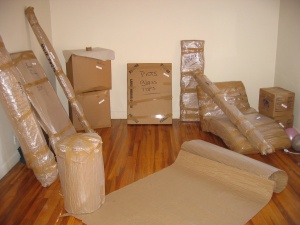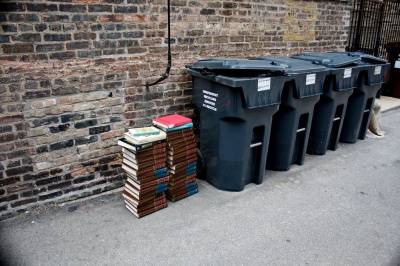 Our moving by Justin Nash
Our moving by Justin Nash
While last time we covered the hidden cost of moving, in today's article we will concentrate on the best way to pack before the actual move.
Packing your belongings before moving out of your home is an activity which most people dread. To be successful with this operation, you will need plenty of time, boxes, various wrapping material and a system in place. Without a proper plan, the move is sure to become an even worse nightmare than it usually is.
Time
Starting the night before the actual move, even if you're only moving from a one bedroom apartment, isn't the best approach. In an ideal situation you'd want to be finished one day before the day of moving so that you have enough time to pack all the forgotten things people always find in the last minute, food from the fridge and all the things you are using on a daily basis.
Boxes and packing material
Although it's a good idea to use all the suitcases and bags you already have at hand, that will hardy be enough. The most important packing material you will need are boxes, bubble wrap and newspaper (for securing kitchen ware). Additional items usually include permanent markers, packing tapes, polyfoam wraps, polystyrene beads, plastic bags and other various accessories.
With boxes, you can either buy them (they are usually between $1.50 to $5 per box) or you could ask at nearby shops for empty boxes, which could dramatically decrease the cost of moving, if you manage to acquire enough of them. Also, many moving companies offer you the chance to buy or hire the boxes directly from them. As for the amount - of course that depends on the size of your home, number of rooms, number of family members and their habit of hoarding unnecessary belongings accumulated over a number of years. But the consensus is that for a standard 5-bedroom house you will need as much as 100 boxes. It might sounds a lot, but consider how many boxes will be used for the kitchen and living room alone! No matter which way you get them, make sure you have a good selection of sizes. Professional moving companies who offer the hiring option, will be pleased to come and inspect your home and give you an estimate of the amount of boxes necessary.
System
Of course: not everybody loves spending their valuable time by creating lists of packed belongings, numbering closed boxes and following to-do lists. On the other hand, without a proper system in place, unpacking will become a nightmare. Your system doesn't have to be too sophisticated, but a few general rules are necessary:
- print out a numbered list where you will record what every packed box contains
- give each box a number and write down an detailed inventory of every box on the list you prepared
- give each room (of the place you're moving to) a color and also color the appropriate boxes the same as the room they belong to
These three steps should help you to stay on the top of packing and unpacking.
How to pack
First things first: before you do any packing, you have got to declutter thoroughly. Decluttering is sometimes painful work because in the process you end up getting rid of all the junk you have become emotionally attached to over time. But it will pay off in the end: decreasing the amount of things you have to move to an absolute minimum will save you money on packing material and the associated transportation cost.
 photo by Bart Heird
photo by Bart Heird
It makes sense to allow at least one full day for the decluttering and packing of each room, or two days in the case of kitchens and living rooms. Group things that belong together in the same box. Pack heavy items into small boxes and light items into big boxes, or you could also try to group light and heavy items in the same box to even the weight out. Make sure you mark boxes that carry fragile items.
When it comes to clothes, some people prefer to fill up the empty spaces in other boxes, pack them in suitcases or buy special wardrobe boxes. These allow you to hang the clothes in them as in the wardrobe, leaving an empty space at the bottom, which can be filled with shoes and other things.
Before you close a box, make sure you have recorded its inventory and mark it with the color of that the room the box will be moved to.
A good idea is to create a first-aid box for each member of the household plus a snack box so that on the night of arrival, everybody has what they without searching through dozen of boxes. The fist-aid boxes should include bathroom items inc. a towel, pillow & duvet along with beddings, a cell phone charger, a bedside table lamp or a torch (the first night in a new house could be a bit difficult especially for young children and a bit of light never hurts) or even a story book - anything that the person might need on the night of arrival. The snack box should include a kettle, coffee, teas, milk, soft drinks and a selection of snacks that would keep you going while unpacking such as sandwiches, biscuits, chips, chocolate or fruit.
Final advice
If you have hired a professional company to move you, let them do the job: don't move the boxes yourself, as they would not appreciate any interference. Stand back and let them get on with what they are being paid to do. After arriving at your new home and when the trucks are finally empty, make sure you go and check with your list if everything arrived to your new home. Also check that all of the fragile items are still intact and if anything has been broken, complain right there and then. In the case of mishaps or accidents, proper insurance coverage will come in handy, which we will cover in detail in the next article.

